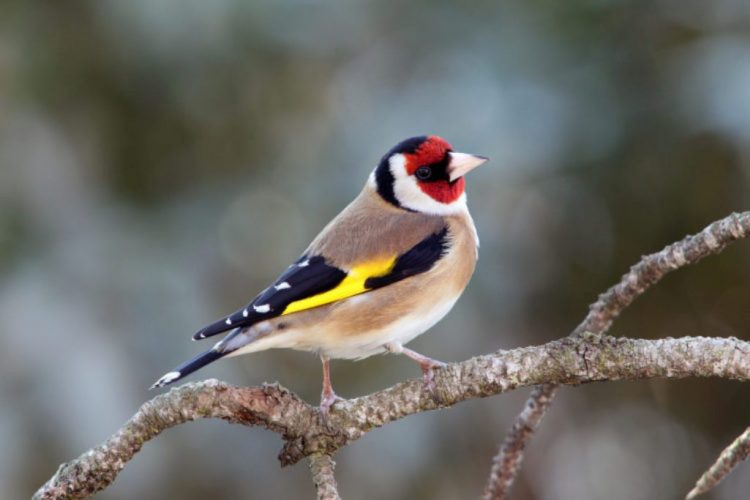The European Goldfinch (Carduelis carduelis) is a small passerine songbird in the finch family that is native to Europe, North Africa, and western Asia. This songbird has been introduced to other areas, including Australia, New Zealand, and Uruguay. This beautiful small bird is found in open, partially wooded lowlands and is a resident in the milder west of its range, but it migrates from colder regions.
The goldfinch will also make local movements, even in the west, to escape bad weather. The bird breeds in mixed woodland, orchards, parks, commons, gardens, and pine plantations where there are thistles and other plants that produce seeds. The goldfinch is about 12 to 13 cm long, with a wingspan of 21 to 25 cm and a weight of 14 to 19 grams.
Both sexes are broadly akin; however, the goldfinch has a red face and a black-and-white head, and the back and flanks are buff or chestnut-brown. The black wings have a broad yellow bar. The tail is black, and the rump is white. Therefore, the female bird is very similar to the male but has a slightly smaller red area on the face. Goldfinches will display themselves to each other during spring by singing and swaying their wings from side to side.
The European Goldfinch song is an enjoyable silvery twittering; however, the call is a melodious sound, and the song is a pleasant tinkling medley of trills and twitters, always including the trisyllabic call phrase or a teLLLIT-teLLIT-teLLLIT.
The male goldfinches are the only birds that can extract seeds from teasel heads by clinging to the stem and probing with their long, pointed bill. Thus, females have shorter beaks, and so they are unable to exploit teasel heads.
Listen to the melodious Song of European Goldfinch
In the autumn, when seed heads are common, goldfinches have a broad diet, feeding on groundsels, ragworts, and dandelions, as well as their favorite teasels and knapweeds. Therefore, outside of the breeding season, goldfinches travel in flocks in search of food during the day. The nest is mainly built by females within a week or several weeks above a few meters of ground. The males accompany but do not contribute anymore. Normally, a nest is cleanly made with twigs and swaying branches.
Many European artists use goldfinch in their works. The goldfinch is habitually depicted in Italian Renaissance paintings of the Madonna and Child. Antonio Vivaldi composed a concerto in D major for the flute, “Il Gardellino,” where the flute imitates the singing of the goldfinch. In a popular poem by Patrick Kavanagh, “The Great Hunger,” the Goldfinch is one of the rare glimpses of beauty in the life of an elderly Irish farmer.
The goldfinches on the railway paling were worth looking at
A man might imagine then
Himself in Brazil and these birds, the birds of paradise
The goldfish is classified as Least Concern (LC) on the IUCN Red List and included in the Birds of Conservation Concern Amber List (medium conservation concern).
Also, read Black Sickle Bill! The Bird of Paradise

